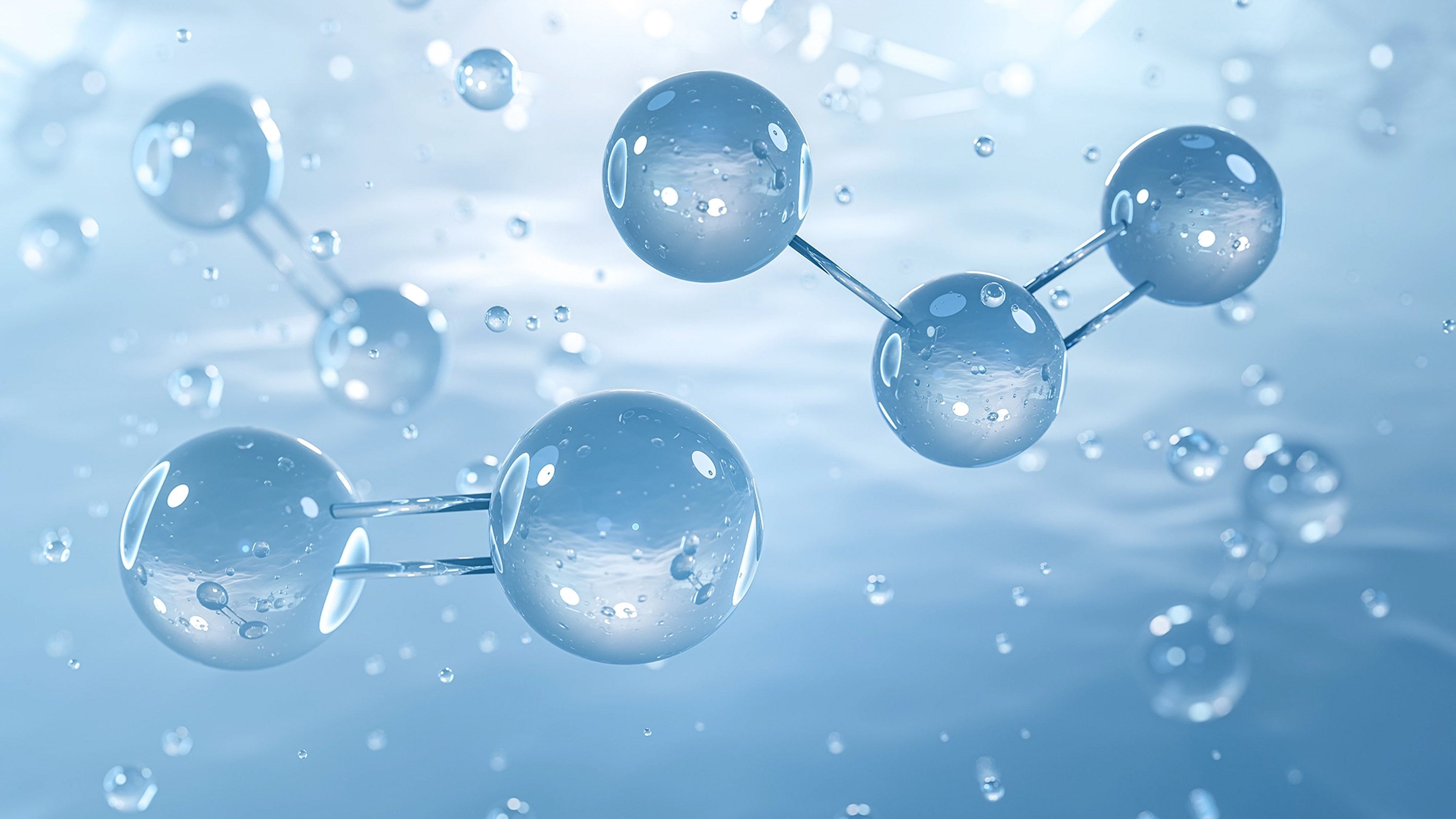Sign up for our newsletter and get 10% off!
Hyaluronic acid

Gautier Lalevée

In 2020, the global market for hyaluronic acid in medical applications was estimated at around $10 billion
In 2020, the global market for hyaluronic acid in medical applications was estimated at around $10 billion, and is set to grow significantly over the next few years due to increasing demand for hyaluronic acid-based skin care products and medical treatments. Zoom in on this macromolecule.
Hyaluronic acid is a polysaccharide (a complex sugar) naturally present in the human body (present in all our cells), notably in joints, eyes and skin. It has a chain-like structure and can retain large quantities of water, enabling it to play an important role in joint lubrication (synovial fluid and tendon sheaths), skin hydration and elasticity, and the regulation of intraocular pressure in the eye.
Did you know? Hyaluronic acid can retain up to 1000 times its own weight in water, making it an excellent skin moisturizer.
Hyaluronic acid is a versatile and important molecule that plays a key role in many biological functions.
The use of hyaluronic acid
Hyaluronic acid (also known as sodium hyaluronate) is also used in cosmetics and skincare products for its moisturizing and anti-aging properties. It can be used to reduce the appearance of fine lines and wrinkles, increase skin firmness and improve overall texture. In medicine, it can be used as a treatment for osteoarthritis and to help lubricate damaged joints.

Its presence in the joint
Hyaluronic acid is a natural component of synovial fluid, helping to lubricate joints. HA is also present in articular cartilage and is synthesized by chondrocytes, the cells that produce the essential components of cartilage’s extracellular matrix. Hyaluronic acid also plays a role in tendon function. Tendons are surrounded by a synovial sheath, which also produces hyaluronic acid. This substance helps lubricate tendons and reduce friction between them and surrounding structures, such as bones and muscles. It also penetrates cartilage and plays an active role in maintaining healthy cartilage. It also has anti-inflammatory properties and plays an essential role in maintaining joint homeostasis.1,2
Hyaluronic acid is a natural molecule produced by the human body that plays an important role in maintaining tissue health and elasticity.
HA supplementation for athletes
Hyaluronic acid supplementation can be beneficial for athletes and active people, in particular to help maintain joint and connective tissue health. Here are some potential benefits:
- Reduced joint pain.
- Improved joint mobility and flexibility, which can be particularly useful for athletes involved in sports with joint impact.
- Hyaluronic acid is an important component of connective tissues such as tendons, ligaments and cartilage. Supplementing with hyaluronic acid can help strengthen these tissues and prevent injury.
- Reduced oxidative damage: thanks to HA’s antioxidant properties, free radical damage during exercise is reduced.
The formulation of Synergy6 is made up of highly concentrated molecules naturally found in the extracellular matrix of joint components, notably hyaluronic acid.
Our scientific approach has enabled us to combine its precise, optimized dosage to guarantee maximum effect on the joints.
- Lin, W., Liu, Z., Kampf, N. & Klein, J. The Roleof Hyaluronic Acid in Cartilage Boundary Lubrication. Cells 9, 1606(2020).
- Oe, M.et al. Oral hyaluronan relieves knee pain: A review. NutritionJournal 15, (2016).


